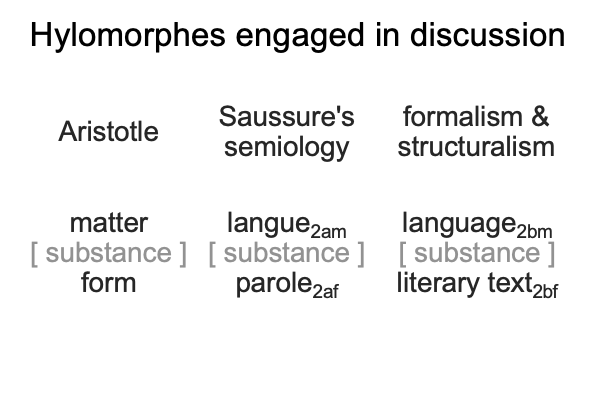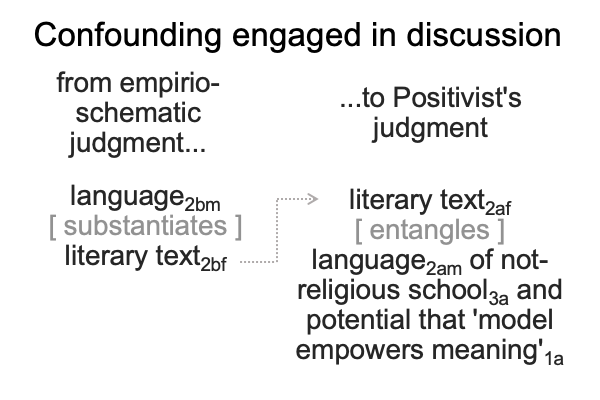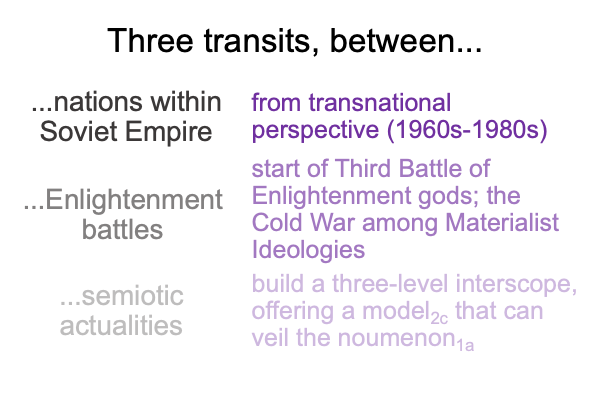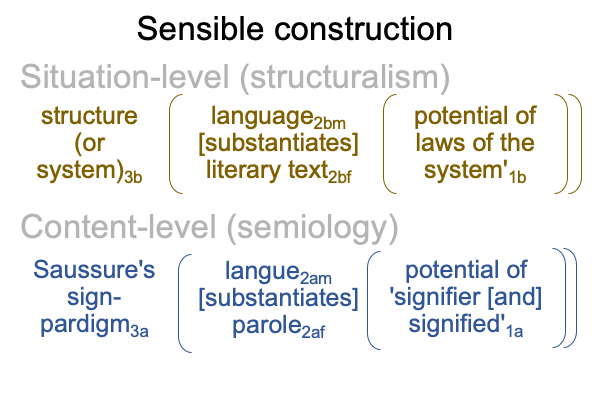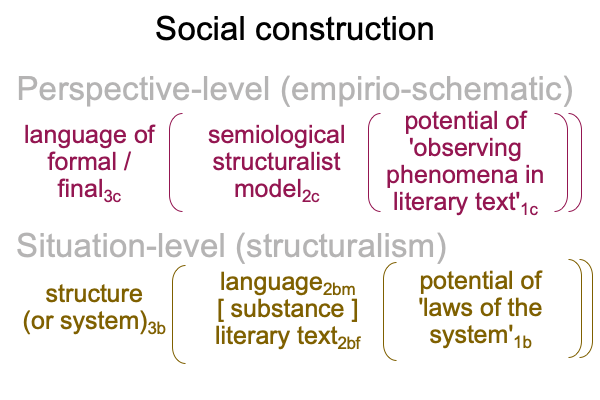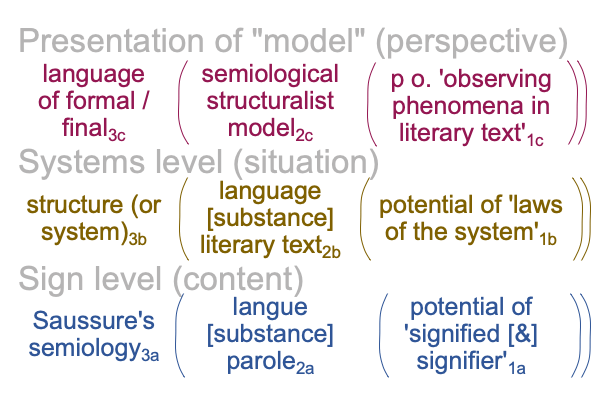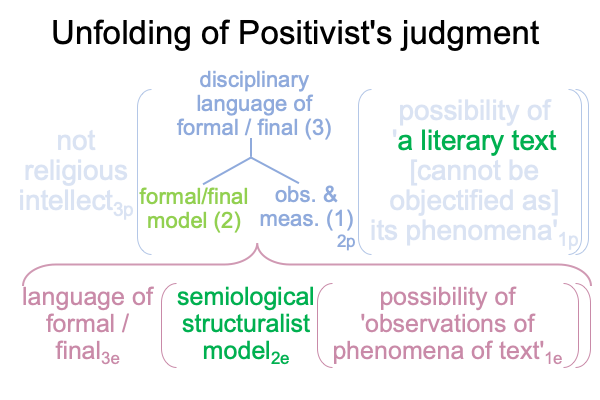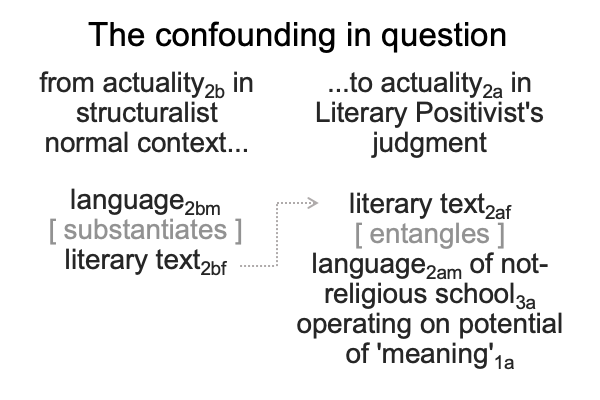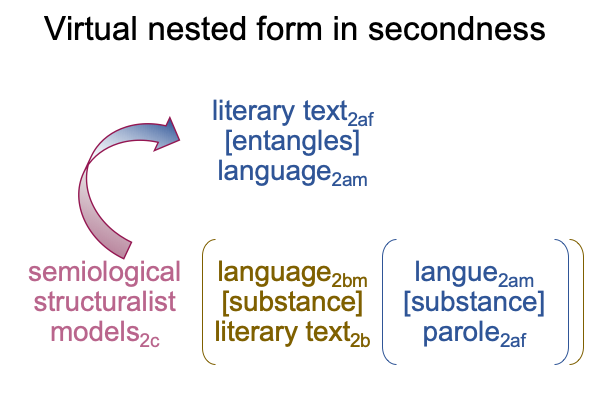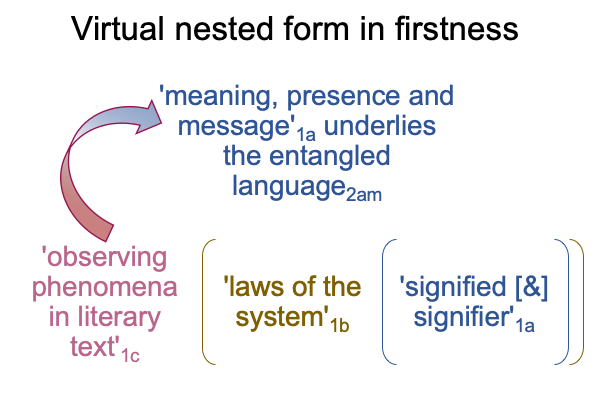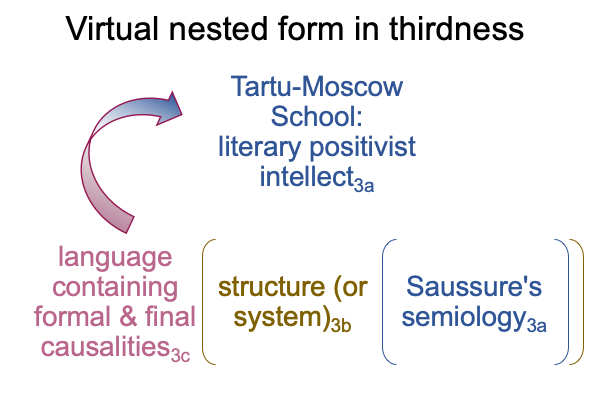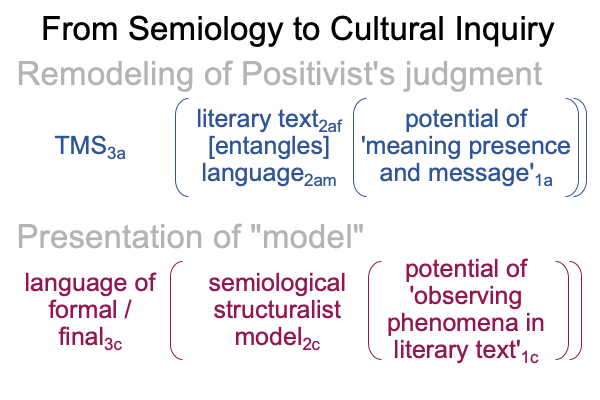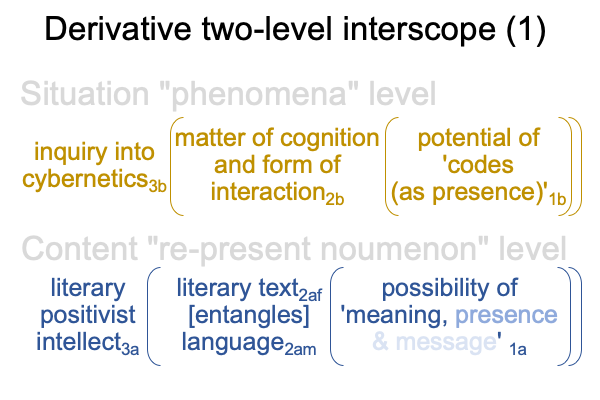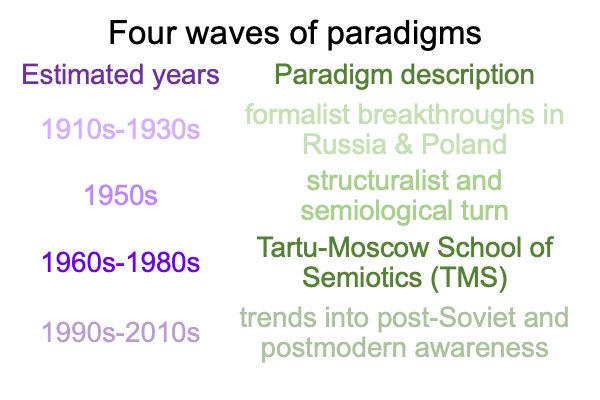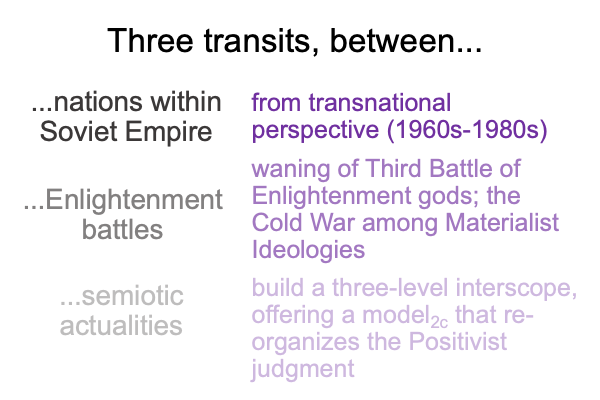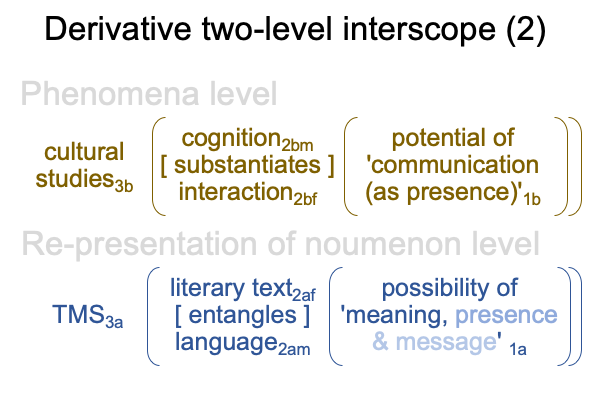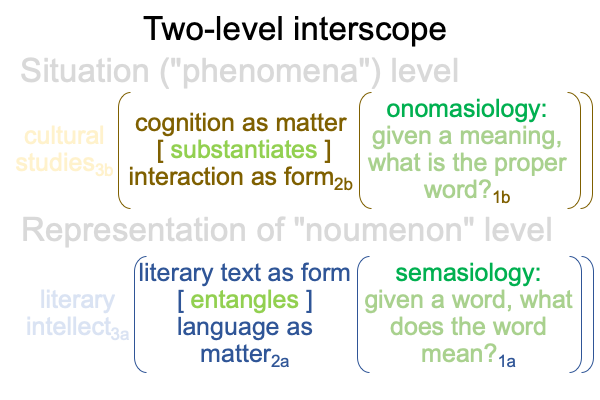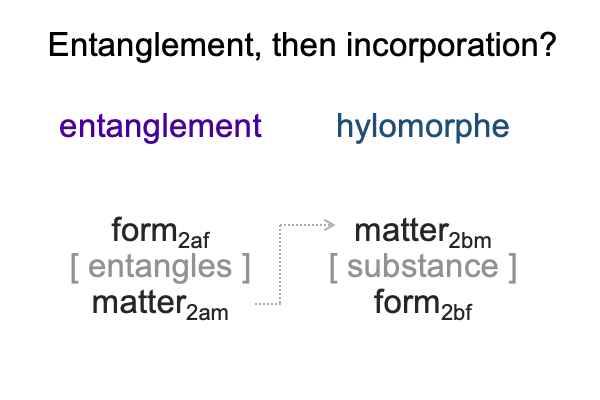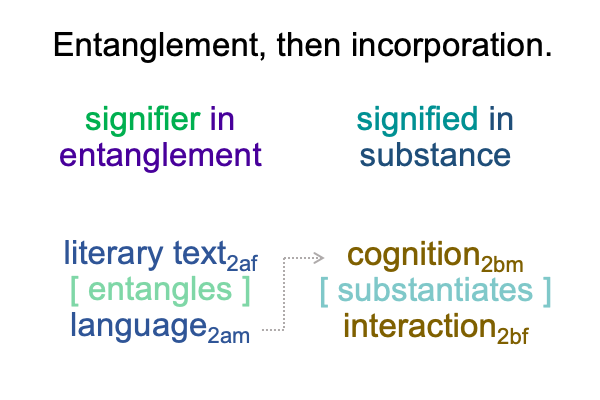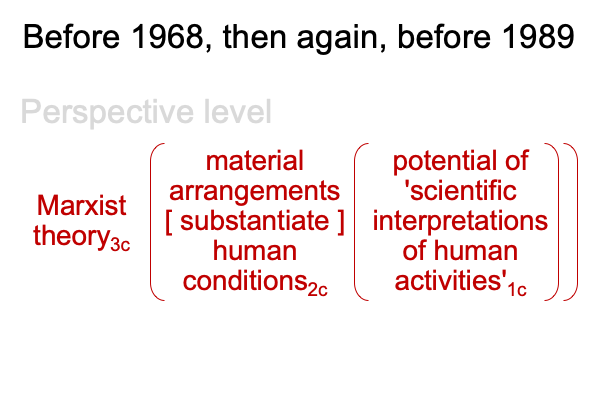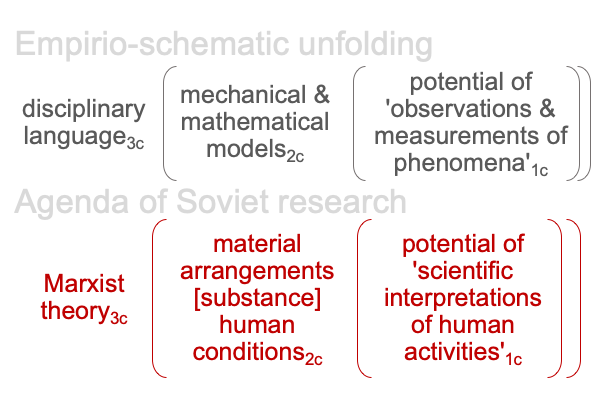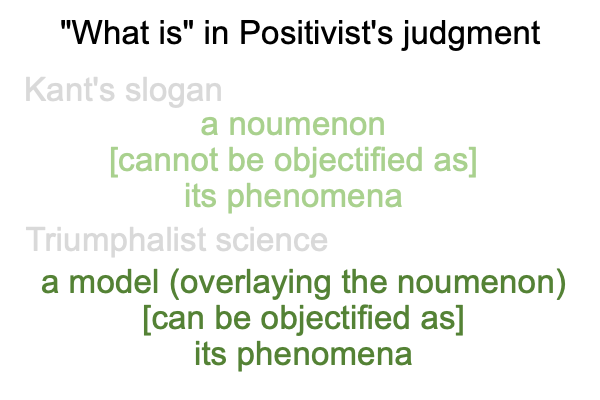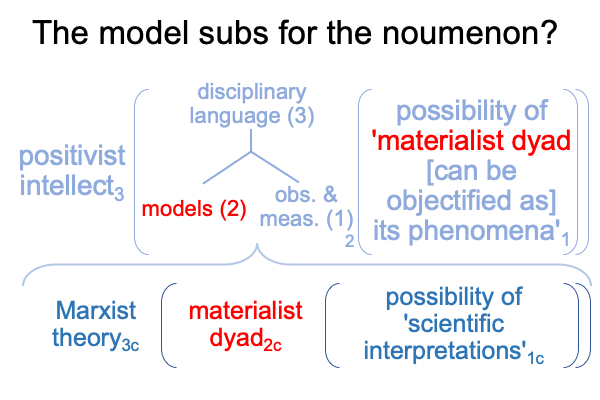Looking at Igor Pilshchikov and Mikhail Trunin’s Article (2016) “The Tartu-Moscow School of Semiotics” (Part 11 of 27)
0135 Now, for a semiotic game.
If I replace the perspective-level actuality2c with the situation-level nested form, then I get a really long nested form containing five items.
The formal side of the five items are subscripted 3c, 3b(2c), and 2b(2c).
The final side of the five items are subscripted 2b(2c), 1b(2c), and 1c.
0136 The formal side roughly corresponds to the following figure.
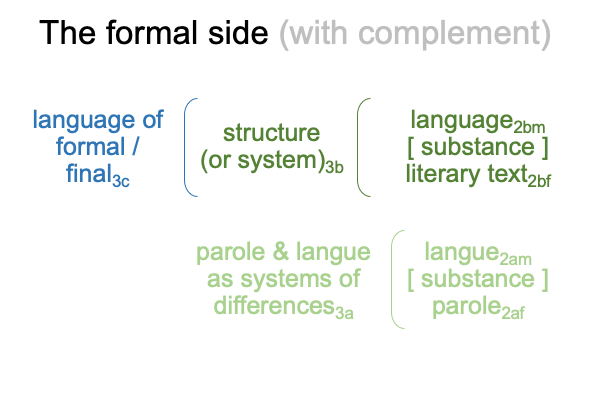
0137 Here, a formalist and finalist language3c (a disciplinary language that expresses formal and final causations that are integral to material and efficient causalities) contextualizes the situation-level normal context3b(2c) and actuality2b(2c) of a structuralist model2c.
Oh! Look at what comes to mind as a parallel!
The parallel resides, not on the situation-level, but on the content-level.
0138 At the start of section four (4), the authors ask, “How does formalism… er… structuralism… or whatever one labels that situation-level normal context3b… end up combining with semiology3a… er… semiotics3a, the study of signs3a?”
Well, the above figure is one suggestion.
In the realm of formal causalities, structure (or system)3b virtually situates Saussure’s semiology3a.
0139 Saussure’s semiology3a offers a disciplinary language3e that does what “formalism” nominally accomplishes (that is, conjuring formal and final causes), with respect to crafting thoughts into spoken words. I suppose that the formalist fixation on literary devices comes as a subtle reaction to the rise and the success of the mechanistic sciences in the West. Literary devices are like mechanical contrivances that operate according to formalist designs.
0140 Formalist designs?
The structure or the system3b(2c) characterizes the situation produced with Saussure’s definition of language as two arbitrarily related systems of differences. Saussure’s definition empowers structuralists to look at the operations withinsystems of differences (generally) and the system of differences built into every spoken language (particularly).
Saussure’s semiology3a, on the other hand, accounts for how thoughts2am can serve as matters that substantiate written words as forms2af. This is a formal accounting. The use of a particular word2af in a text2bf links a certain situational expression of language2bm as matter with a certain content-level manifestation of langue2am as matter.
0141 What are the lessons, from the formalist side3c and from the point of view of the structuralist model2c?
The way that language2bm substantiates the literary text2bf should be intelligible.
The way that parole2af is substantiated by langue2am should be universal, applicable to all within the linguistic community.
0142 The final side corresponds to the following diagram.
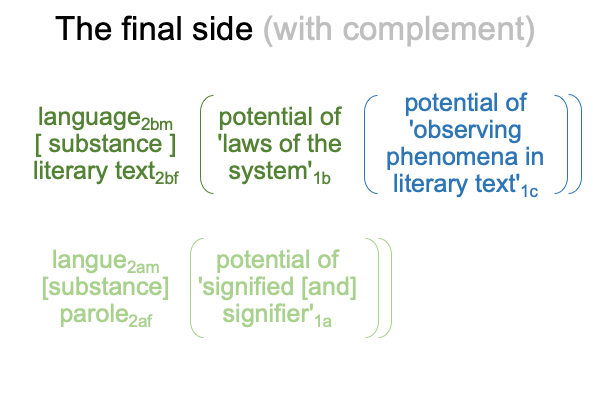
0143 I start with the potential of ‘observing phenomena in a literary text’1c. According to the collaborators in the TMS,the task of the scholar in linguistics and literature is to realize this potential1c in two ways.
0144 First, the scholar observes the laws of the system1b which potentiate the text2bf. For example, the laws of a scientific publication1b are not the same as the laws of a fairy tale1b.
Of course, a literary text does not come with a label that indicates its genre, style, tradition, and so forth. So, a scholar has work to do in this regard. In doing so, the scholar explores efficient and final causalities inherent in an empirio-schematic model1c.
0145 Second, the scholar senses {the signified [and] the signifier}1a underlying {langue [and parole}2a. Each parole2afmanifests a particular signifier1a within a system of different signifiers.
0146 Often enough, an author cannot articulate the signified1a that potentiates a langue2am without putting pen to paper. The author may find that a particular parole2af is not the correct vessel (form) for a langue2am as signified1a(matter).
When this happens, the parole2af does not do justice to the potential of the signifier1a.
Indeed, this is one of the great challenges of explicit abstraction.
How often does a scholar realize that what he has written does not correspond to what he was thinking?
0147 Saussure’s semiology3a offers a potential1a that conveys how one can observe phenomena in a literary text1cwhile keeping the challenges of speech-alone talk in mind. What is the literary text2bf saying1c? It proclaims signifiers1a that are contiguous with signifieds1a.
0148 But, is that proclamation true?
Clearly, the terms “parole2af” and “signifier1a” do not represent the same element. And, yet they seem to. Parole2a (a speech act) belongs to secondness, the realm of actuality. Signifier1a (calling attention to a symbol-word) belongs to firstness, the realm of possibility. The same goes for langue2am and signified1a.
0149 Do I need to add that the logics of secondness include the laws of contradiction and noncontradiction, while the logics of firstness are inclusive and allow contradictions.
0151 Of course, some may disagree with these associations, but to me, the imaginary dyad, {signifier [and] signified}1aoffers a reason why… um… the relation between parole and langue is not arbitrary. It only appears to be arbitrary when comparing different spoken languages.
As soon as the content-level dyad, {langue2am [substantiates] parole2af}, is grasped by the situation-level potential of ‘laws of the system’1b, the relation is no longer arbitrary.
0152 In this way, parole2af as form in a semiological normal context3a is situated as language2bm as matter within a structuralist normal context3b.

